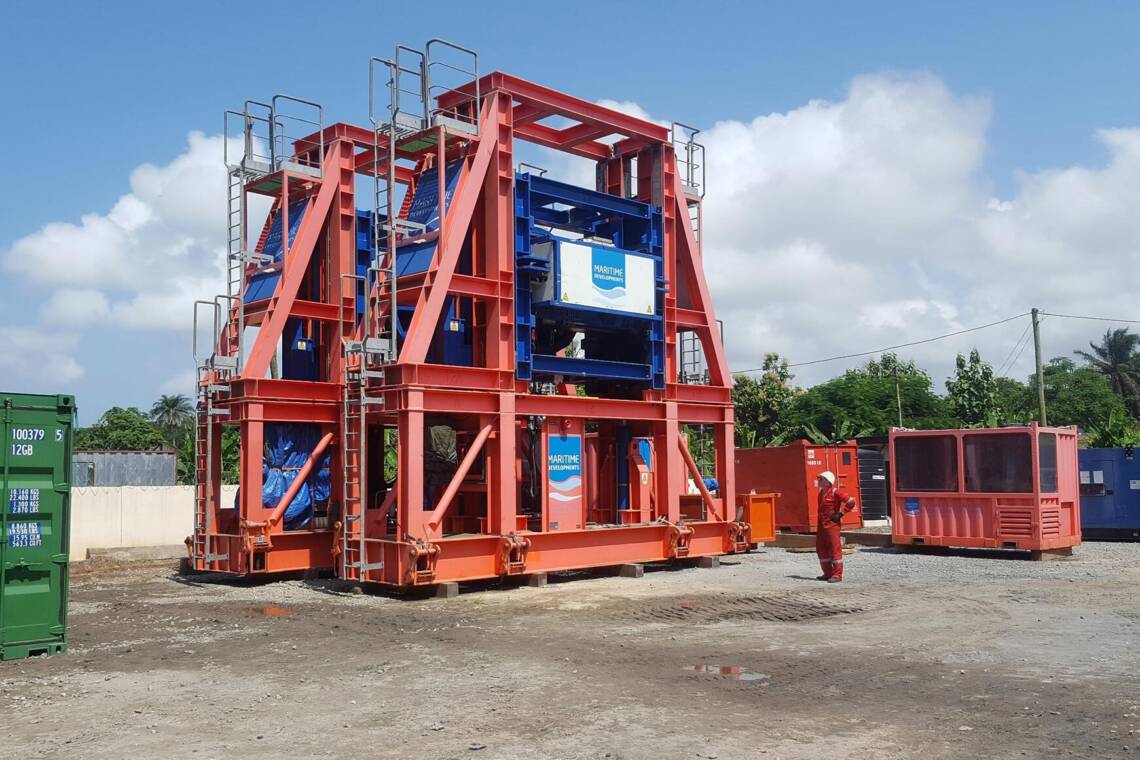MDL Vlogs: WA strategy and technology in region

Africa is an exciting place for the energy sector.
Our VP for the region Michael Blease-Shepley explains why in this three-part vlog, covering MDL’s strategic decisions for this market and our innovative technology enabling operations in region.
Read the transcript below, or jump to the bottom of the page to watch the vlog!
"From early 2021, we started to look at different ways that we can approach our strategy, and where we might want to relocate equipment, or solidify a plan of where equipment is currently within the world. So, one of the focused areas we decided to look at was securing the Generation 3 RDS into a storage location within West Africa where it can move project-to-project.
"Now, on a lot of projects second-tier installation contractors mobilise from Europe, sometimes from where they would collect the reels or the flexible product – Las Palmas seems to a place that we all like to mobilise from, also sometimes Blyth or even Peterhead. But there is, maybe 30% of the time, a requirement for equipment to be local, - and that has obvious benefits from a commercial perspective.
"That’s when you can look at local tonnage like a platform support vessel, a barge, anchor handlers, or small construction vessels that are available, and a lot of operators down in West Africa have these vessels that we call ‘FSVs’ – Field Support Vessels.
"These Field Support Vessels are often deployed day-to-day, doing various field operations, running ROVs and small 'lift & shift' scopes, but occasionally there might be a requirement for a subsea tieback, or a tie in, or just a replacement of a flexible line, to which a spread like MDL has locally within West Africa can be easily mobilised from Ghana which is central to West Africa. It has a deep-water port in Takoradi where a project vessel can mobilise; or if it’s not actually the vessel that will be installing the product, it can easily be put onto a logistics coaster which goes up and down the coast, and then be mobilised in another country across West Africa.
"So, having that capacity or capability to mobilise the RDS Generation 3 from Takoradi gives local installation contractors across West Africa the opportunity to deliver some of these smaller projects that don’t require larger, sophisticated tonnage that have really high mobilisation and demobilisation costs.
Overcoming challenges
"Some of the challenges that they have is the availability of the equipment, and the aformentioned tonnage within country to deliver complex projects. The challenge from the operators is to cut costs on these large tonnage that come down to the market to do subsea installation works.
"There are so many different projects locally, and quite often within Africa it’s not as straightforward as being an approved vendor, or following a system to receive a tender. Sometimes there’s not as clear visibility as perhaps we see in Europe or other mature regions across the world, so it’s really important to be within Nigeria, Ghana and other West African countries to ensure that we fully understand the challenges that our client base is going through, to offer a solution that’s local and/or crossed with equipment that’s available for mobilisation from Europe.
"[In 2020] we completed our project in Forcados and showed that we could mobilise a Reel Drive System to install single reel products in challenging areas such as the shallow, marshy margins within Forcados. That was certainly a project that was well received by the operator and the local installation contractor and [it comes to show] there are so many different types of projects and products that can be installed thinking outside the box - and MDL really can do that.
"We also proved that you can install product from Reel Drive Systems from an Anchor Handler in Ghana which was another recent project that we did – a single reel installation campaign. It’s really just looking at different marine platforms that MDL can utilise a spread on to install product that is cost effective.
"That’s the most important thing right now with the challenges in the world, specifically with the oil price, but also with the Covid-19 pandemic: to minimise cost as best as possible and to increase production within field, making sure that the project is safe.
Enabling technology
"I think the best piece of equipment that we have that’s suitable for West Africa is the Generation 3 RDS. That’s because of the integration in the HPU in the tower; it’s a skinny system that can deliver the same punch - up to 350-tonne, with significantly less footprint. That’s certainly an attractive enabler to drive reels and it’s very suitable for West Africa.
"The Horizontal Lay System that we have at MDL – we actually call them HLS-100, -200 and -300 – they’re enabling grillage systems (although fairly complex grillage systems) that actually house tensioners at different capacities. So you could have a 50-tonne, an 85-tonne, a 110-tonne, or a 150-tonne tensioner and these are really enabling assets that can work from a platform with various different types of subsea jewellery, such as terminations or buoyancy modules that can be connected to the flexible lines whilst it’s being installed.
"They’re fully modular and road-transportable, and they really are a suitable assets to take away the large commercials revolving around a fully integrated Vertical Lay System.
"We find that there isn’t another enabler in shallow-to-mid water other than the Horizontal Lay System.”
Michael Blease-Shepley, VP Africa
- April 2024MDL supports Saipem on Greece INGS
- January 2024Preparation is key to a long life subsea
- January 2024Forward thinking with Holland
- January 2024Ensuring peak performance for FPSO and platform owners in 2024
- December 2023Reducing the risk of cable failures









